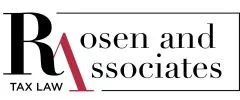Retirement planning is a crucial part of financial security, especially in Canada, where tax laws and retirement benefits offer unique opportunities and challenges. At Rosen & Associates Tax Law, we understand the intricacies of Canadian tax law and how they impact your retirement planning. This article delves into tax-efficient strategies that can help you maximize your retirement savings and enjoy a comfortable, stress-free retirement.
Understanding the Basics of Canadian Retirement Planning
The Canadian Retirement System
The Canadian retirement system comprises several key components:
- Canada Pension Plan (CPP) / Quebec Pension Plan (QPP): Provides a monthly pension to retirees who have contributed to the plan during their working years.
- Old Age Security (OAS): A monthly payment available to most Canadians aged 65 and older, regardless of their work history.
- Guaranteed Income Supplement (GIS): Additional income for low-income OAS recipients.
Registered Retirement Savings Plans (RRSPs)
RRSPs are a cornerstone of retirement planning in Canada. Contributions to an RRSP are tax-deductible, reducing your taxable income for the year. The investments within an RRSP grow tax-free until withdrawal, typically during retirement when your income and subsequent tax rate are likely much lower.
Tax-Free Savings Accounts (TFSAs)
TFSAs provide a flexible savings option where contributions are not tax-deductible when deposited, but withdrawals are tax-free. Investment growth within a TFSA is also tax-free, making it an excellent tool for retirement savings.
Tax-Efficient Strategies for Retirement Planning
Maximizing RRSP Contributions
To maximize the benefits of an RRSP:
- Contribute Early and Regularly: The sooner you start, the more time your investments have to grow.
- Contribute the Maximum Allowable Amount: Use the full contribution room available to you each year.
- Consider Spousal RRSPs: This strategy can help balance income between spouses in retirement, potentially reducing overall tax liability.
Strategic Withdrawals from RRSPs
When it comes time to withdraw from your RRSP:
- Plan Withdrawals Carefully: Withdraw funds in years when your income is lower to minimize tax impact.
- Convert to a RRIF: By the end of the year you turn 71, you must convert your RRSP to a Registered Retirement Income Fund (RRIF) and start making mandatory withdrawals. These withdrawals are taxable, so it's important to plan accordingly.
Leveraging TFSAs for Tax-Free Growth
Using TFSAs alongside RRSPs can provide tax diversification:
- Maximize TFSA Contributions: Contribute the maximum amount each year to benefit from tax-free growth.
- Flexible Withdrawals: Use TFSAs for emergency funds or to cover unexpected expenses without tax implications.
Be cautious, at both TFSA's and RRSP's have penalties for over-contribution. Each individual must ensure that they contribute under their limit, and as it relates to their RRSP(s), must ensure their contribution room calculations are correct.
Pension Income Splitting
Pension income splitting allows couples to split eligible pension income to reduce overall tax liability:
- Eligible Income: Includes payments from a Registered Pension Plan (RPP) and payments from a RRIF after age 65.
- Tax Savings: Splitting income can move funds into a lower tax bracket, reducing the total tax payable by the couple.
Defer OAS Payments
Deferring your OAS payments can increase the amount you receive:
- Delay up to Age 70: For each month you defer, your OAS payment increases by 0.6%, up to a maximum of 36% at age 70.
- Consider Your Health and Financial Needs: While deferring can increase payments, it's important to consider your health and financial situation.
Understanding and Minimizing Tax on Investments
Investment income can be taxed differently depending on the type:
- Capital Gains: Only 50% of capital gains are taxable up until the first $250,000, and any capital gain after that threshold is taxed at 66.6%.
- Dividends: Eligible dividends benefit from the dividend tax credit, which can reduce the amount of tax owed.
- Interest Income: Fully taxable at your marginal tax rate, so consider tax-efficient placement of interest-earning investments within registered accounts.
Working with a Tax Professional
Given the complexities of tax laws and retirement planning, working with a tax professional can provide significant benefits:
- Personalized Advice: Tailored strategies to suit your unique financial situation and retirement goals.
- Tax Minimization: Expert advice on how to minimize taxes through strategic planning and use of available tax benefits.
- Peace of Mind: Ensuring compliance with tax laws and optimizing your retirement savings can reduce stress and increase financial security.
Conclusion
Retirement planning in Canada requires careful consideration of tax-efficient strategies to maximize your savings and ensure a comfortable future. At Rosen & Associates Tax Law, we are dedicated to helping you navigate the complexities of Canadian tax law and make informed decisions for your retirement. Contact us today to start planning for a secure and fulfilling retirement.
The content of this article is intended to provide a general guide to the subject matter. Specialist advice should be sought about your specific circumstances.



